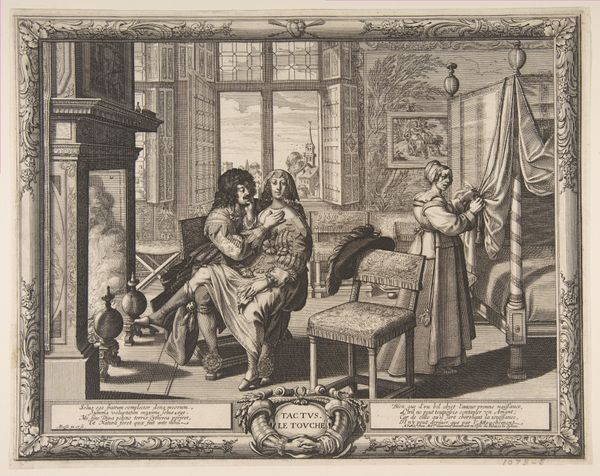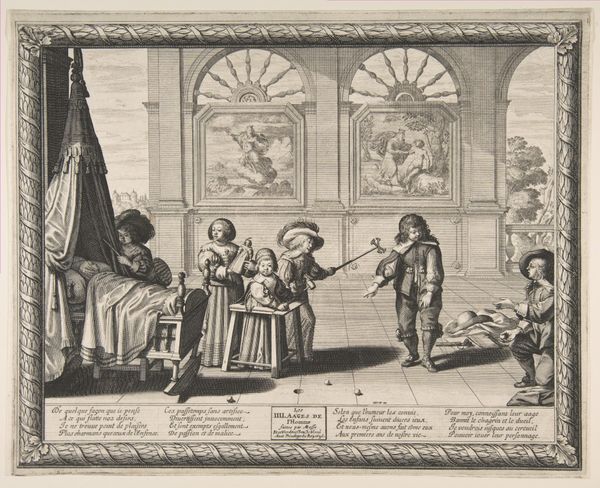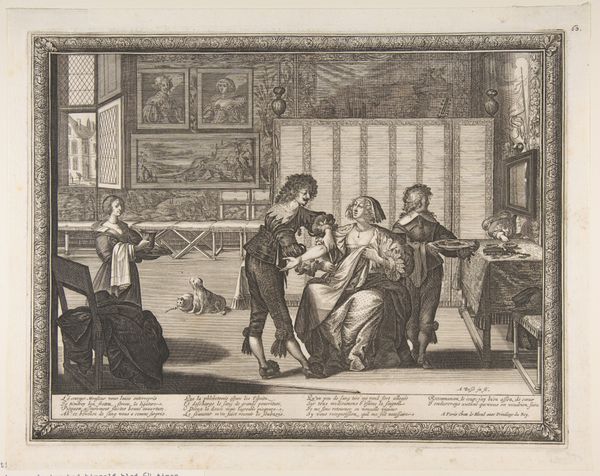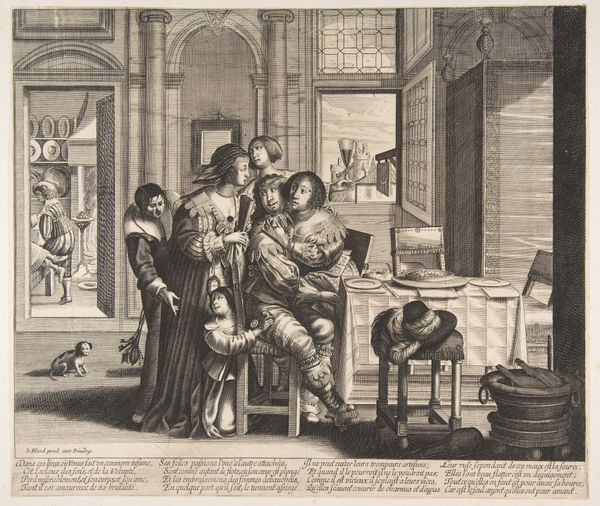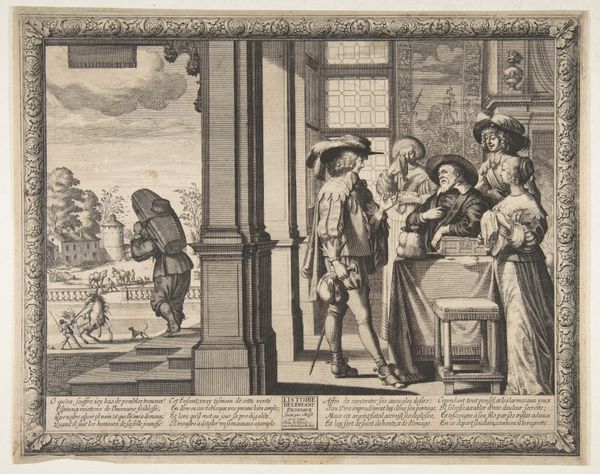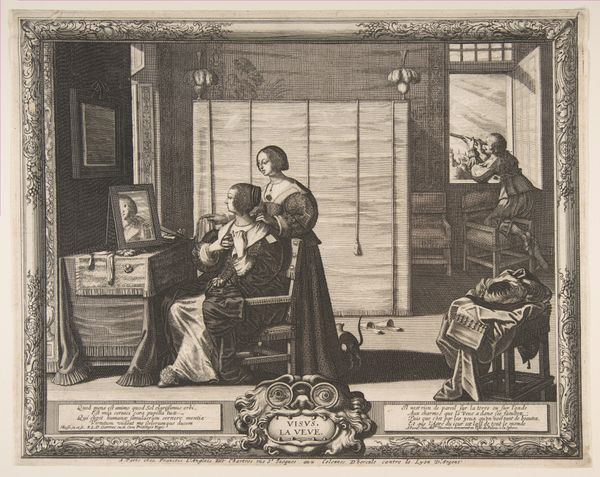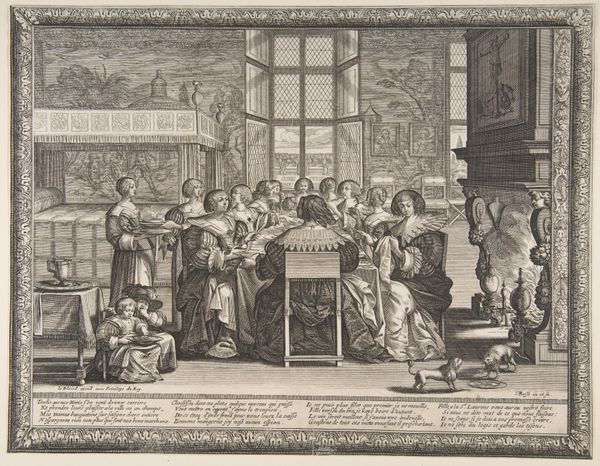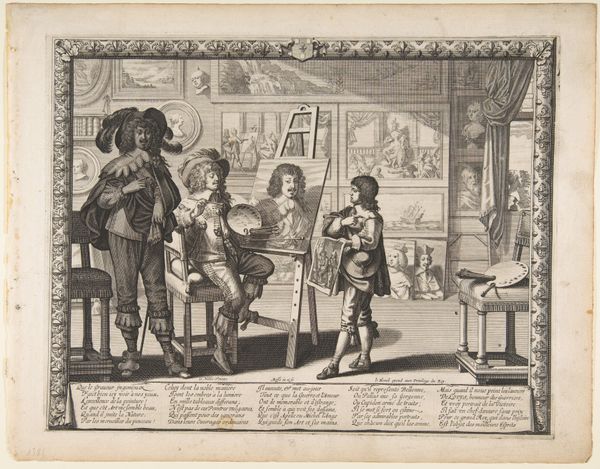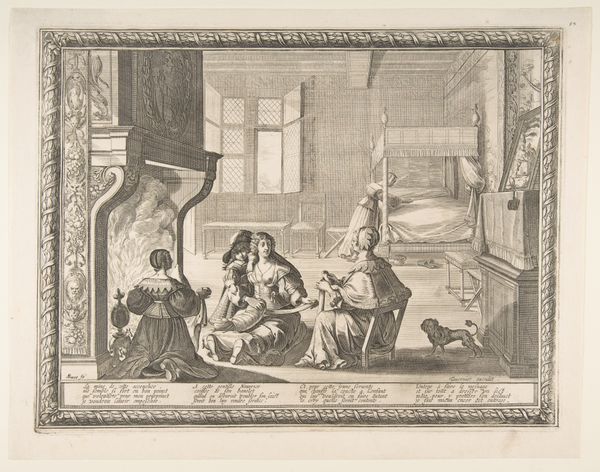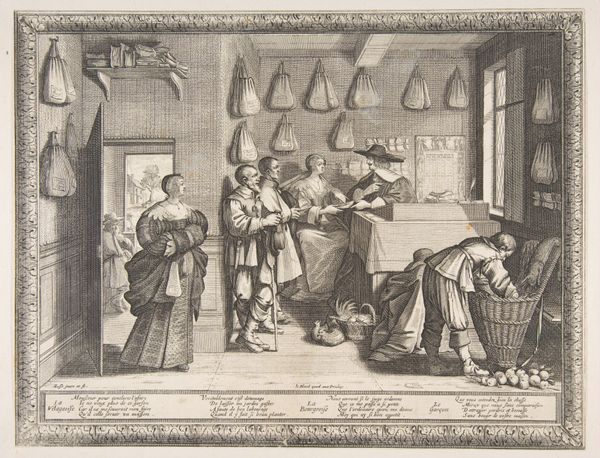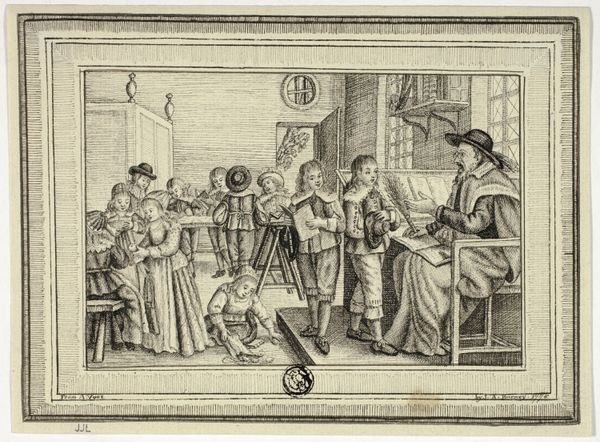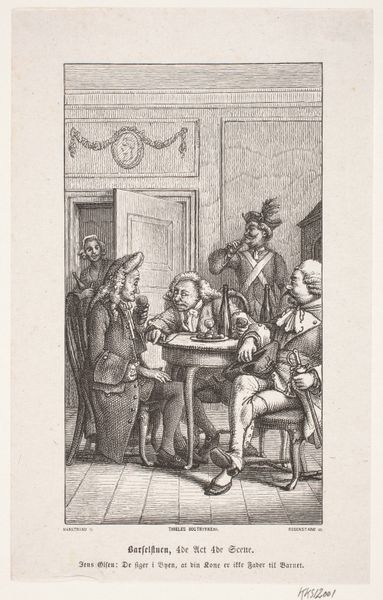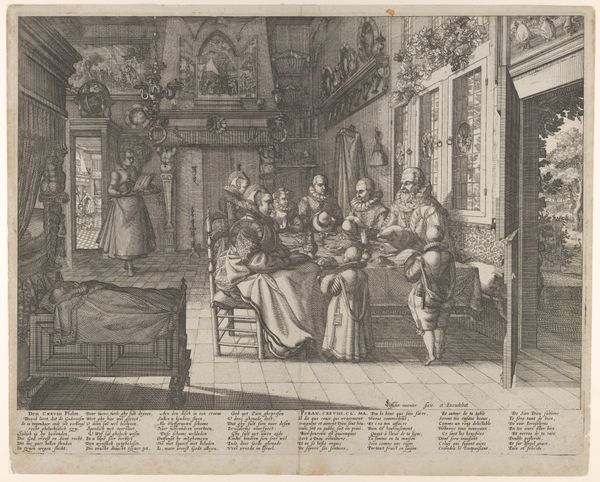
drawing, print, engraving
#
drawing
#
narrative-art
#
baroque
# print
#
genre-painting
#
engraving
Dimensions: Sheet: 10 7/8 × 13 9/16 in. (27.7 × 34.4 cm) Plate: 10 5/16 × 12 13/16 in. (26.2 × 32.5 cm)
Copyright: Public Domain
Curator: Look at this intriguing print. Abraham Bosse created "The Prodigal Son in a House of Ill Repute" sometime between 1631 and 1641. The engraving on laid paper now resides at the Metropolitan Museum of Art. Editor: My immediate reaction is a feeling of claustrophobia. It's as if we're peering into a gilded cage. The dense composition, combined with the fine lines of the engraving, makes for a rather oppressive atmosphere. Curator: Absolutely. Consider the socio-political climate in 17th-century France; it was one of great social stratification and moralizing critiques of excessive behavior. Bosse uses the parable of the Prodigal Son to comment on wealth, temptation, and moral decay within Parisian society. Editor: The figures almost spill out of the frame! There's a huddle of bodies around the presumed son, but the power dynamic feels unsettling. Note the way women are positioned; are they complicit or victims within this narrative? Curator: Exactly! Bosse engages the public role of art as moral instruction and social commentary. He highlights anxieties around wealth, leisure, and social mobility. It’s not just about religious morality but touches on social performance and the construction of identity. The "house of ill repute" becomes a microcosm of broader societal ills. Editor: And the technical execution further enhances this interpretation, doesn’t it? The engraving technique allows for minute detail – the opulent fabrics, the crowded interiors. I feel as though it almost becomes a catalogue of excess itself. It is almost as though by depicting it he somehow legitimizes it, which poses interesting questions for audiences of today! Curator: The dog in the corner is also interesting, seeming to be looking straight back at the viewer, knowingly... As always, reading into these themes provides so much to explore even within an early modern work. Editor: I agree completely, a complex print that speaks volumes about social structures.
Comments
No comments
Be the first to comment and join the conversation on the ultimate creative platform.
